Nasal Valve Collapse: A Common Cause of Nasal Problems
Updated May 2025
In this article:
Want to learn more about the latest treatment for nasal valve collapse? Read further for additional information about this latest treatment.
Allergies. Colds. Sinus infections. There are several reasons why you may have difficulty breathing at night. They can be caused by something in the environment—like pollen—to a problem with the structure of the nose—such as a deviated septum. Structural problems often require nasal plastic surgery to correct.
However, another common cause is nasal valve collapse. There are multiple ways it can develop, but its main symptoms are nasal obstruction, congestion and difficulty breathing through the nose.
It is seen in 1 out of every 4 patients with nasal obstruction.
At Raleigh Capitol Ear, Nose, Throat and Allergy, we know that several different conditions can cause stuffiness. With our dedicated team of board-certified otolaryngologists in Raleigh, we will get to the heart of the matter with state-of-the-art treatment so you can breathe easier. If you have any of the symptoms described in this article, we encourage you to schedule an appointment with us today.
We’ll take a look at this condition, its symptoms and how we can help you.
The Benefits of LATERA® and Other Innovative Treatments at Raleigh Capitol Ear, Nose, Throat and Allergy
The latest and most successful treatment for a collapse utilizes a small implant called LATERA®. Another effective treatment utilizes radiofrequency to resolve the problem.
In this blog, we’ll also explore these innovative procedures, elaborate on who is a candidate and how they can benefit you.
Now, let’s take a closer look at nasal valve collapse.
What Is Nasal Valve Collapse?
In this condition, the nasal valve is weakened, causing it to narrow.
The nasal valve is the narrow area at the tip of the nose composed of the tip cartilages and the septum. The septum is the center part of your nose that divides it into the left and right nostrils.
The nasal valve is actually composed of several different structures, particularly the place where the upper lateral cartilages come in contact with the septum.
Because this area is so small, even a minor blockage or slight change in the nose structure can cause a big problem with breathing.
What Are the Symptoms of Nasal Valve Collapse?
The symptoms of a collapse are the same as those seen in many other conditions, such as chronic sinusitis or the common cold. These symptoms include:
- Congestion
- Nasal obstruction
- Difficulty breathing through the nose
What Causes Nasal Valve Collapse?
The most common causes are:
- Trauma to the nose
- Inflammation
- Aging
- Scar tissue
- Weak nasal cartilage
- Enlarged tissue
- Complications following nose plastic surgery.
In some cases, it may be hereditary. It is much more common in those who have narrow nostrils or an over-projecting nose.
How Can I Determine if I Have Nasal Valve Collapse?
Actually, you can make a fairly accurate assessment. If you breathe better by using nasal strips (such as Breathe Right), or you notice improvement when you pull your cheek skin toward your ear, then you may have had a collapse.
If you notice any of the above, contact one of our expert ENTs who can confirm a diagnosis. Sometimes, an accurate assessment may be needed through a nasal endoscopy.
This procedure allows us to more closely examine your nasal passages. It will also help us determine if there is another cause for your chronic congestion, such as a deviated septum or polyps.
How Is Nasal Valve Collapse Treated?
At Raleigh Capitol Ear, Nose, Throat and Allergy, we’re proud to be able to offer two of the latest treatments: LATERA® nasal implant and radiofrequency.
What is a LATERA® procedure?
LATERA® is a small, absorbable nasal implant. This implant is gently inserted into the wall of your nose, where it supports cartilage, reducing nasal airway obstruction. Two years after the procedure, patients still experienced a 57% reduction in nasal obstruction symptoms.
Other benefits of LATERA® include:
- Patients find it easier to breathe through their nose
- There’s a reduction in nasal stuffiness and congestion.
- Patients find that it’s easier to breathe or get enough air through their noses when exercising.
- Those who have had LATERA® have less trouble sleeping.
How long does a LATERA® implant last?
The implant is absorbed after around 18 months. However, collagen begins to form and replace the implant after around 24 months.
Although the implant is absorbed, patients have felt the benefits of the LATERA® procedure for years.
How long does it take LATERA® to work?
Patients will experience the benefits of LATERA® within weeks to months of undergoing the procedure.
Who Is a Candidate for the LATERA® Procedure?
Not sure if you’re a candidate for LATERA®? Ask yourself the following questions:
- Have you been diagnosed with nasal valve collapse?
- Do you have serious, chronic nasal obstruction?
- Does your nasal congestion improve when you use nasal strips?
- Do you have nasal stuffiness that does not go away despite traditional treatment?
- Are you having difficulty going to sleep because of nasal congestion?
If you answered yes to any of these questions, then you may be a candidate for LATERA®.
Is LATERA® Covered By Insurance?
Whether or not LATERA® is covered varies among insurance companies. We suggest contacting your insurance company before your appointment for more information about what is covered and any co-pays that may be involved.
Our surgery scheduling and billing departments will work with patients to help them understand exactly what is and is not covered before any procedure is performed.
Radiofrequency Treatment With VivAer(™)
By applying low-temperature radiofrequency, we can move the problem nostril into the correct position or a better position. The radiofrequency energy travels through a specially designed, FDA-approved instrument through the VivAer procedure.
Stiffening the nasal airway allows it to open, and patients can breathe normally again. This approach is highly successful, and the procedure does not change the shape of your nose.
Nasal Surgery for Nasal Valve Collapse
While LATERA® and VivAer(™) radiofrequency are an excellent alternative to traditional nasal surgery, there may be cases where more extensive surgery is needed.
During surgery, we reconstruct the cartilages in your nose to improve your airway. This surgery is performed through one small incision at the base of the nose. If needed, we can use ear cartilage for reconstruction.
What Are Some Non-Surgical Treatments for Nasal Valve Collapse?
Non-surgical treatment involves the use of allergy medicines(such as antihistamines and nasal steroid sprays) as well as Breathe Right strips.
What Are Other Common Nasal Abnormalities?
Some of the most common structural abnormalities of the nose may have to be corrected using nose plastic surgery. These include:
A DEVIATED SEPTUM
The septum is the center of the nose that divides it into the left and right sides. When the septum leans toward the left or the right, this can cause chronic congestion and other problems. Roughly 80 percent of the general population has some type of septal deviation.
NASAL POLYPS
These are common, affecting roughly 30 percent of all Americans. These grape-shaped growths tend to occur more frequently in those with allergies and asthma.
Like nasal valve collapse, this condition seems to run in families. Fortunately, these growths are benign. In some cases, these polyps don’t cause any symptoms, and if they don’t bother you, then no treatment is needed. Problems only occur when they block the nasal passages.
ENLARGED TURBINATES
Turbinates are small layers of bone and mucous on the walls of your internal nasal cavities. They warm the air we breathe. However, when these are abnormally enlarged, the result can be:
- Nasal congestion
- Drainage
- Facial pain
- Reduced airflow
See Why We Are the Practice of Choice in the Triangle
For decades, Raleigh Capitol Ear, Nose, Throat and Allergy has been recognized as one of the region’s best ear, nose and throat medical practices. Our comprehensive approach to medicine means we can offer an extensive variety of services, whether your child needs tubes in the ears or if you’re struggling with the inconvenience of sleep apnea.
We invite you to explore the wide range of treatments available at our Sinus Center.
We’re also experts in facial and nose plastic surgery.
If you have chronic nasal congestion, we encourage you to contact us and make an appointment so we can provide the compassionate care and expertise you need and deserve.
Key Takeaways:
- Difficulty breathing at night can be caused by several different conditions, and it often requires the expertise of an ENT doctor in Raleigh to make the distinction.
- Stuffiness can be caused by:
- Allergies
- Dolds
- Sinus infections
- Structural nasal issues
- Deviated septum
- Nasal valve collapse.
- Nasal valve collapse affects 1 in 4 patients with nasal obstruction.
- Common causes include:
- Trauma
- Aging
- Inflammation
- Weak cartilage
- Complications from nasal surgery
- If nasal strips or pulling your cheek outward improves your breathing, you may have a nasal valve collapse.
- Diagnosis can also be confirmed by a nasal endoscopy.
LATERA®, an absorbable nasal implant, reduces obstruction and improves airflow for many patients, with long-lasting results even after the implant dissolves. - VivAer™ radiofrequency treatment reshapes nasal tissue to open airways without changing the nose’s appearance.
- In more severe cases, nasal surgery may be necessary to reconstruct nasal cartilage and restore airflow.
- Non-surgical options include:
- Nasal strips
- Antihistamines
- Steroid sprays
- Other nasal issues may require surgery depending on their severity. This includes conditions like:
- A deviated septum
- Nasal polyps
Enlarged turbinates
====
Sources:
Cleveland Clinic, “Nasal Valve Collapse,” https://my.clevelandclinic.org/health/diseases/24977-nasal-valve-collapse




